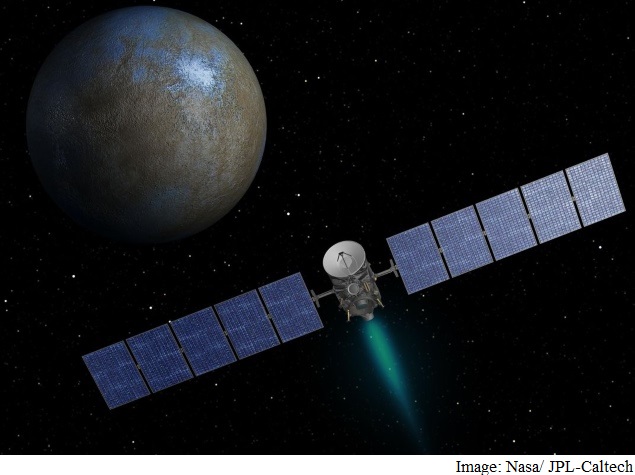- Home
- Science
- Science News
- 'Nasa Closer Than Ever to Finding Earth's Twin'
'Nasa Closer Than Ever to Finding Earth's Twin'

Two of the eight are the most Earth-like of any known planets found so far outside our solar system, astronomers told the 225th meeting of the American Astronomical Society in Seattle, Washington.
The pair are likely to have hard, rocky surfaces in addition to being an orbiting distance from their stars that is neither too hot nor too cold for water and possibly life to exist, astronomers said.
The discovery doubles the number of known planets that are close in size to the Earth and believed to be in the so-called "Goldilocks zone" of the stars they orbit.
"We are now closer than we have ever been to finding a twin for the Earth around another star," said Fergal Mullally of the Kepler Science Office.
"These candidates represent the closest analogues to the Earth's own system found to date."
The worlds were found with the help of Nasa's planet-hunting Kepler mission, a space telescope which has scoured more than 150,000 stars for planets beyond our solar system since its launch in 2009.
The latest trove of candidate planets found by Kepler and announced Tuesday was 554, bringing the total potential planets to 4,175.
Scientists have recently verified the existence of the 1,000th planet found by Kepler.
"Three of the newly validated planets are located in their distant suns' habitable zone, the range of distances from the host star where liquid water might exist on the surface of an orbiting planet," Nasa said in a statement.
"Of the three, two are likely made of rock, like Earth."
While it is intriguing to consider the possibility of life existing on another planet like ours, the two best candidates are so far away that learning more about them presents a big challenge.
The first, Kepler-438b is 470 light-years from Earth. It circles its star once every 35 days.
Kepler-438b has a diameter that is 12 percent bigger than Earth, and maintains a 70 percent chance of being rocky, researchers said.
The other, Kepler-442b, is 1,100 light-years away, and orbits its star once every 112 days.
Kepler-442b is about a third larger than Earth, and experts say there is a three in five chance it is a rocky planet.
"We don't know for sure whether any of the planets in our sample are truly habitable," said second author David Kipping of the Harvard-Smithsonian Center for Astrophysics.
"All we can say is that they're promising candidates."
Catch the latest from the Consumer Electronics Show on Gadgets 360, at our CES 2026 hub.
Related Stories
- Samsung Galaxy Unpacked 2025
- ChatGPT
- Redmi Note 14 Pro+
- iPhone 16
- Apple Vision Pro
- Oneplus 12
- OnePlus Nord CE 3 Lite 5G
- iPhone 13
- Xiaomi 14 Pro
- Oppo Find N3
- Tecno Spark Go (2023)
- Realme V30
- Best Phones Under 25000
- Samsung Galaxy S24 Series
- Cryptocurrency
- iQoo 12
- Samsung Galaxy S24 Ultra
- Giottus
- Samsung Galaxy Z Flip 5
- Apple 'Scary Fast'
- Housefull 5
- GoPro Hero 12 Black Review
- Invincible Season 2
- JioGlass
- HD Ready TV
- Laptop Under 50000
- Smartwatch Under 10000
- Latest Mobile Phones
- Compare Phones
- OPPO Reno 15 Pro Max
- Honor Win RT
- Honor Win
- Xiaomi 17 Ultra Leica Edition
- Xiaomi 17 Ultra
- Huawei Nova 15
- Huawei Nova 15 Pro
- Huawei Nova 15 Ultra
- Asus ProArt P16
- MacBook Pro 14-inch (M5, 2025)
- OPPO Pad Air 5
- Huawei MatePad 11.5 (2026)
- Xiaomi Watch 5
- Huawei Watch 10th Anniversary Edition
- Acerpure Nitro Z Series 100-inch QLED TV
- Samsung 43 Inch LED Ultra HD (4K) Smart TV (UA43UE81AFULXL)
- Asus ROG Ally
- Nintendo Switch Lite
- Haier 1.6 Ton 5 Star Inverter Split AC (HSU19G-MZAID5BN-INV)
- Haier 1.6 Ton 5 Star Inverter Split AC (HSU19G-MZAIM5BN-INV)

















